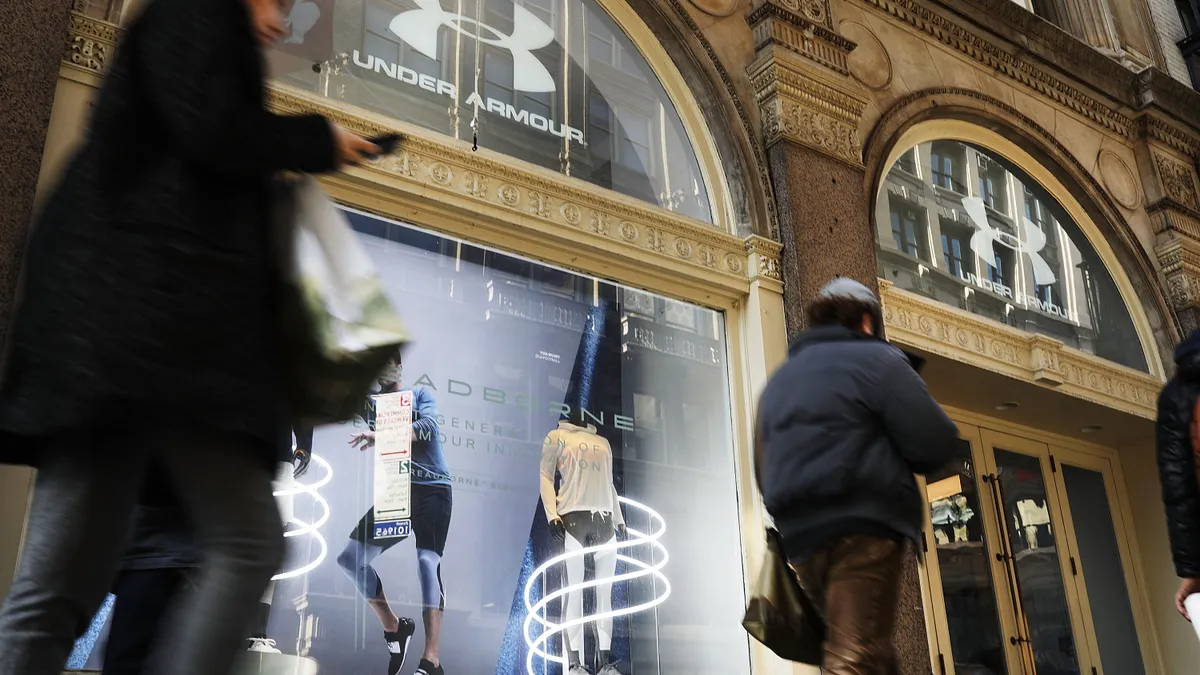Dive Brief:
- Under Armour CFO Dave Bergman, a 21-year veteran of the activewear brand, is leaving the company at the end of Under Armour’s first quarter. Samsonite executive Reza Taleghani will join in February to take on the position and work with Bergman during a transition period.
- The C-suite change comes as Under Armour reported second-quarter earnings ahead of its expectations, though overall revenue still decreased 5% to $1.3 billion. North American revenue fell 8% to $792 million, though CEO Kevin Plank said he was encouraged by “signs of brand momentum” in the region.
- The company also swung to an $18.8 million loss, from net income of $170 million a year ago. Gross margin declined by 250 basis points, to 47.3%, mostly due to the cost of tariffs, supply chain headwinds, and an unfavorable channel and regional mix.
Dive Insight:
Under Armour is still in turnaround mode, but it will now execute on its plans without longtime CFO Bergman.
Taleghani has 25 years of experience across a variety of roles, including 15 years at J.P. Morgan and a tenure as CFO at Brightstar Corp. He oversaw financial and operational transformations as the CFO of Samsonite Group S.A. and led the company to record gross margins, per a press release.
In a statement, Plank thanked Bergman for his “unwavering commitment” and leadership over the years, including almost nine as CFO.
"As we enter a crucial time for the brand, we are deeply thankful for his many contributions and his partnership in ensuring a smooth transition,” Plank said, adding that his successor “brings a global perspective, strong financial expertise, and a strategic mindset that align perfectly with our goals for Under Armour's next chapter.”
One of those goals is a return to stabilization in North America and its wholesale business within its next fiscal year. In addition to an 8% decline in North America, Under Armour’s wholesale business decreased 6% in the quarter as it rebalanced its accounts. Plank said on a call with analysts that he considers stabilization to be plus or minus 1% to 2% year over year.
Needham analyst Tom Nikic noted this was Under Armour’s 10th straight quarter of year-over-year declines in the region. “However, the tone among wholesale partners has shifted from cautious to optimistic, given [Under Armour’s] initiatives around product and marketing,” Nikic said in emailed comments.
While numbers are negative for now, Plank said brand heat in North America is growing. Under Armour’s awareness among 18- to 34-year-olds is now above 80%, compared to roughly 65% six months ago.
“Like the athletes we serve, we know when to push, when to pivot and when to lock in,” Plank said on the call, highlighting the importance of rebuilding credibility and trust. “Trust is built in drops and lost in buckets — and we have been busy depositing one drop, one relationship, one product, one story at a time.”
Part of Under Armour’s product play has been returning the brand to a more premium position in the market. That includes cutting 25% of its SKUs and rolling out products with higher margins, like a $140 backpack the retailer touted in May. Under Armour is taking that further with a plan to elevate its top 10 high-volume styles with better quality and design, as well as higher prices.
All of this comes at a cost, and Under Armour recorded $32 million in restructuring charges in the quarter. Tariffs are also taking a toll, with Plank saying in August that the levies would halve its profitability this year.















